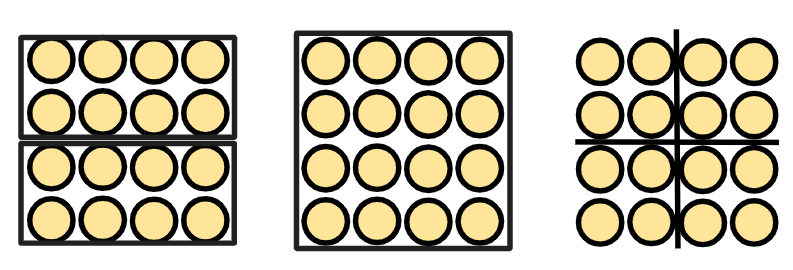Myths about teaching can hold you back
- Year 3
Use knowledge of the relationship between the 2, 4 and 8 times tables to solve problems
I can use the relationship between the 2, 4 and 8 times tables to solve problems.
- Year 3
Use knowledge of the relationship between the 2, 4 and 8 times tables to solve problems
I can use the relationship between the 2, 4 and 8 times tables to solve problems.
These resources will be removed by end of Summer Term 2025.
Switch to our new teaching resources now - designed by teachers and leading subject experts, and tested in classrooms.
These resources were created for remote use during the pandemic and are not designed for classroom teaching.
Lesson details
Key learning points
- If you double the multiples of 2 you get the multiples of 4
- If you double the multiples of 4 you get the multiples of 8
- If you double the multiples of 2 and double again you get the multiples of 8
Keywords
Multiple - A multiple is the result of multiplying a number by another whole number.
Double / doubling - To double means to become twice as many or to multiply by two.
Halving - Halving means to divide into two equal parts.
Common misconception
Pupils may misunderstand the contexts or language within worded problems and therefore not understand the calculation required to solve.
Model clearly how to identify key phrases and words which will identify the operation and equation required for word problems. Pupils may benefit from representing what is known and what is unknown such as by drawing a bar model.
To help you plan your year 3 maths lesson on: Use knowledge of the relationship between the 2, 4 and 8 times tables to solve problems, download all teaching resources for free and adapt to suit your pupils' needs...
To help you plan your year 3 maths lesson on: Use knowledge of the relationship between the 2, 4 and 8 times tables to solve problems, download all teaching resources for free and adapt to suit your pupils' needs.
The starter quiz will activate and check your pupils' prior knowledge, with versions available both with and without answers in PDF format.
We use learning cycles to break down learning into key concepts or ideas linked to the learning outcome. Each learning cycle features explanations with checks for understanding and practice tasks with feedback. All of this is found in our slide decks, ready for you to download and edit. The practice tasks are also available as printable worksheets and some lessons have additional materials with extra material you might need for teaching the lesson.
The assessment exit quiz will test your pupils' understanding of the key learning points.
Our video is a tool for planning, showing how other teachers might teach the lesson, offering helpful tips, modelled explanations and inspiration for your own delivery in the classroom. Plus, you can set it as homework or revision for pupils and keep their learning on track by sharing an online pupil version of this lesson.
Explore more key stage 2 maths lessons from the 2, 4 and 8 times tables: using times tables to solve problems unit, dive into the full primary maths curriculum, or learn more about lesson planning.

Licence
Prior knowledge starter quiz
6 Questions
Q1.Which numbers are multiples of both 2, 4 and 8?
Q2.Which numbers are multiples of 2 and 4 but not multiples of 8?
Q3.Match the groups of 8 to the equal groups of 2
2 × 12
8 × 2
16 groups of 2
20 groups of 2
Q4.Thinking about multiples of 2, 4 and multiples of 8, match the creatures to the number of legs.
16 legs
48 legs
40 legs
48 legs
20 legs
Q5.Which statements are true and which are false?
Multiples of 8 are double a multiple of 4
If you half a multiple of 8 you always get a multiple of 4
All multiples of 2 are also multiples of 8
An odd number multiplied by 2 is a multiple of 4
Double a multiple of 2, then double again, gives a multiple of 8
Q6.Look at the bar model. Which statement below is true?

Assessment exit quiz
6 Questions
Q1.This image shows that 2 × 8 = 1 × 16 = 4 ×

Q2.Doubling multiples of 2 gives multiples of 4 Use this knowledge to match the statements to the correct product.
20
28
36
24
Q3.Doubling multiples of 2 and doubling again gives you multiples of 8 Use this knowledge to match the statements to the correct product.
64
24
32
48


